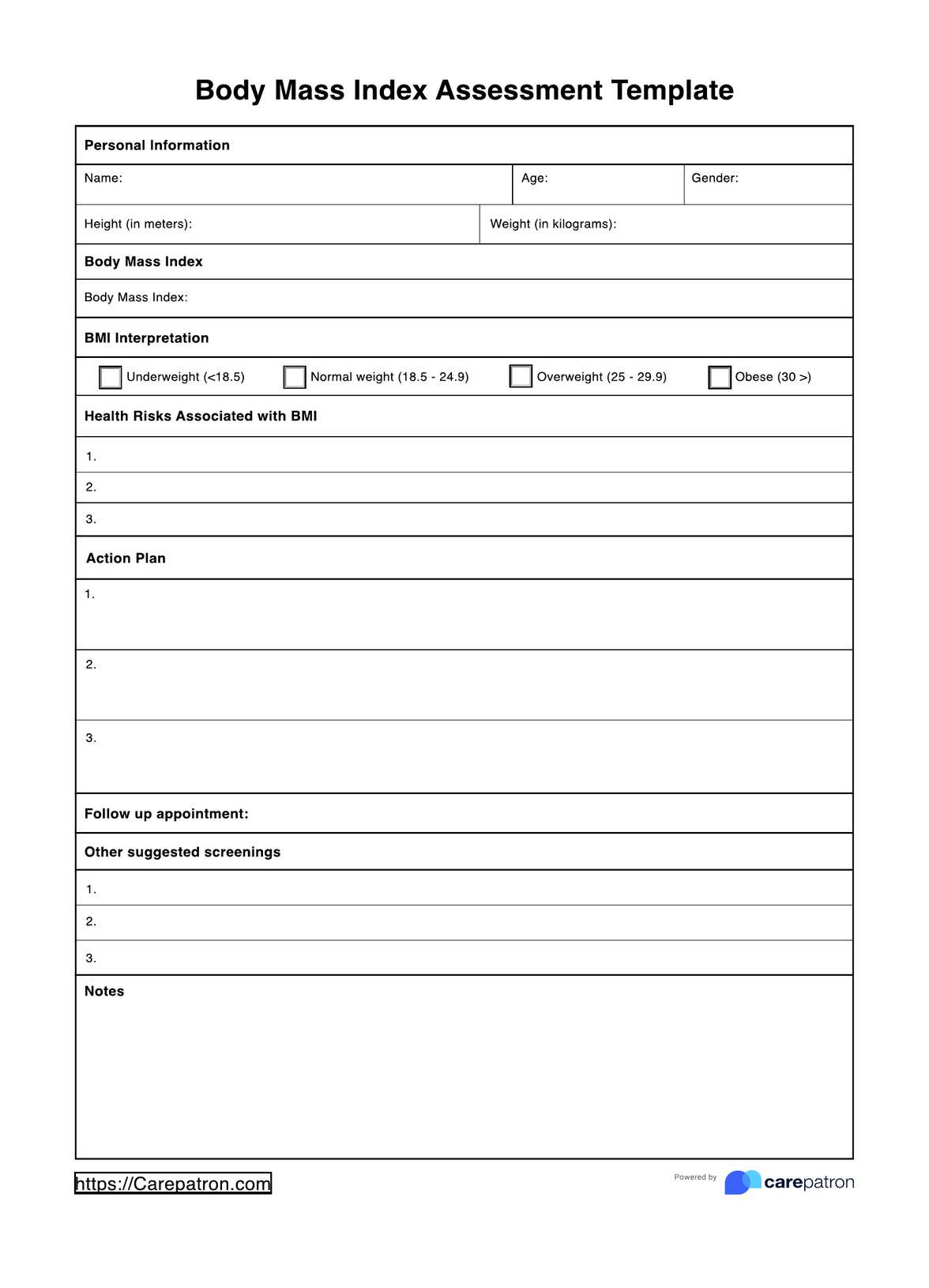The Body Mass Index (BMI) is a measurement tool used to calculate an individual's body fat based on height and weight. It's a helpful tool to assess whether a person is underweight, healthy, overweight, or obese. BMI is calculated by dividing a person's weight (in kilograms) by their height squared (in meters).

Body Mass Index
Learn about Body Mass Index (BMI) and how it is used to assess weight status. Discover how healthcare practitioners can use BMI to promote healthier living.
Body Mass Index Template
Commonly asked questions
Carepatron has made it simple for you to use our free BMI template. All you have to do is download the template, enter your patient's height and weight, and calculate their BMI. You can use the BMI template to track your patient's BMI over time and determine whether they are maintaining a healthy weight.
The frequency of tracking a patient's BMI will depend on their individual health needs. In general, tracking a patient's BMI at least once a year is recommended to monitor their weight and assess their risk for health problems such as heart disease, high blood pressure, and diabetes. However, if a patient is at risk for obesity or has a history of weight-related health problems, you may need to track their BMI more frequently.
EHR and practice management software
Get started for free
*No credit card required
Free
$0/usd
Unlimited clients
Telehealth
1GB of storage
Client portal text
Automated billing and online payments











